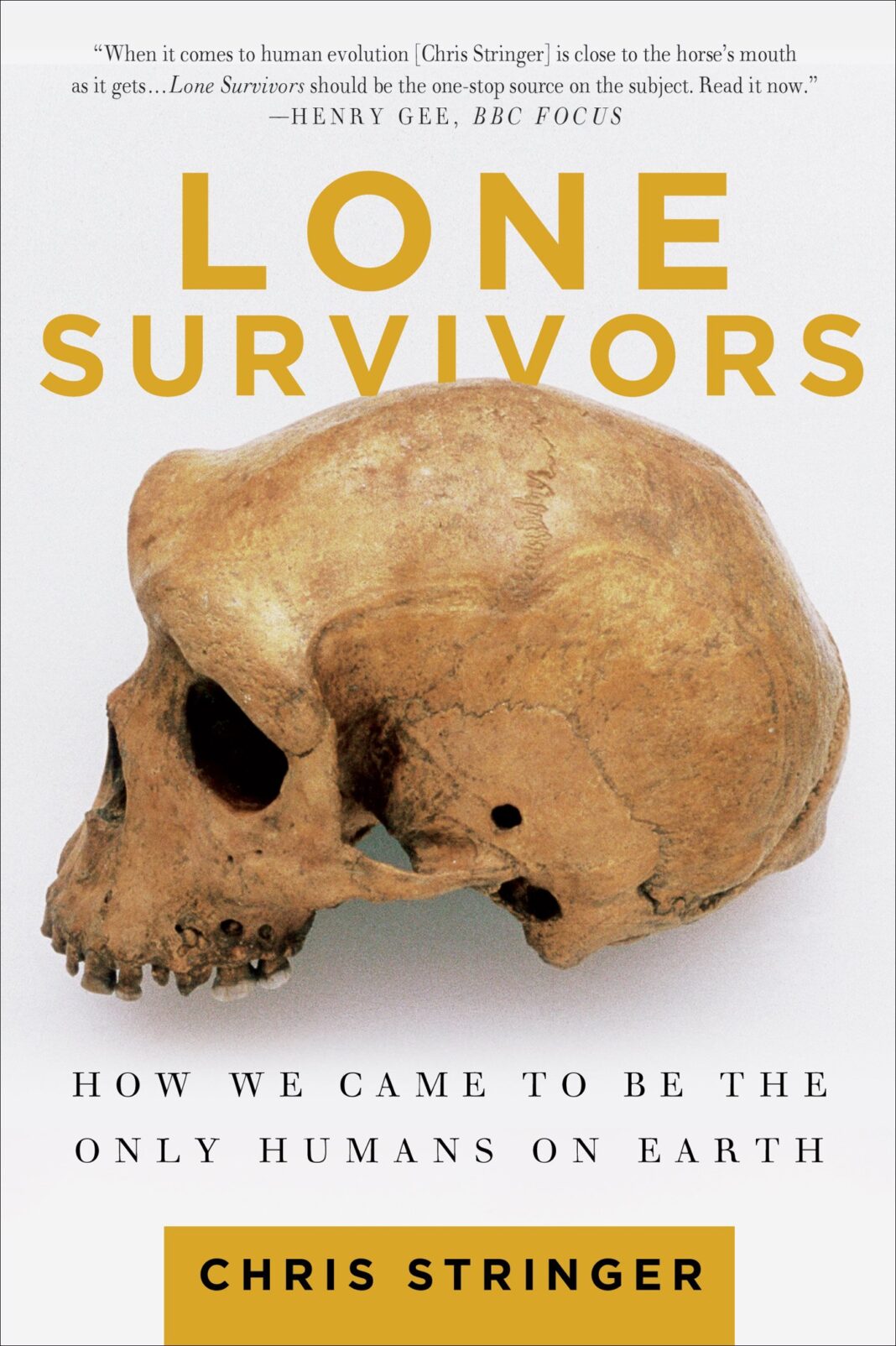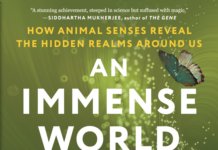The origin of modern Homo sapiens must have been a relatively recent and restricted one in Africa, based on marked similarities between recent humans in both body form and DNA, and it may have been quite rapid, in one small favored area such as East Africa. Some modern humans dispersed to the Middle East (Israel) about 100,000 years ago, and they had perhaps moved on as far as Australia by about 60,000 years. However, Homo sapiens did not enter Europe until about 35,000 years ago, following the rapid development of more advanced Later Stone Age tools and complex behaviors by African moderns about 50,000 years ago.
About 73,000 years ago, the large island of Sumatra in Indonesia was the source of the most powerful volcanic eruption of the last 100,000 (some calculations suggest 2 million) years.
Brain size had achieved essentially modern levels at least 200,000 years ago and was actually larger in the earliest modern humans and the late Neanderthals than the average today (though we need to remember that their bodies were also somewhat heavier and more muscular).
Klein argues that after about 50,000 years ago modern human morphology essentially stopped evolving, while cultural changes accelerated rapidly, even exponentially, from that point on.
Mellars suggests that a neurological switch to modernity in the brain, alongside rapid climatic fluctuations, could have been the driving forces behind this period of heightened cultural innovations, of which the Toba eruption of about 73,000 years ago might have been a part.
Humans do seem to be preprogrammed for religious beliefs, readily taking these onboard, however irrational they may seem to nonbelievers or those of different faiths—and this seems to be as true for adult converts as it is for religiously groomed children. There is disputed evidence that people with strong religious convictions tend to be healthier, live longer, have more surviving children, and are even somewhat wealthier than nonbelievers. If that was true in the past, selection would have favored those with religious beliefs, as long as the benefits outweighed the costs.
Some calculations now place the last common mtDNA ancestor (Eve) at less than 150,000 years old, and it is clear that across the whole human species today, our mtDNA varies far less than is the case in great ape species. This has led to the idea that a recent bottleneck—a drastic drop in population—pruned the variation previously found in the modern human line.
The long-term effective size of the ancestral population for modern humans might have been only about 10,000 breeding individuals, while the effective size of the female population, judged from surviving mtDNA, is sometimes estimated at less than 5,000!
The new rates gave younger estimated ages for recent events in human evolution, but ones consistent with the latest fossil and archaeological data for the exit from Africa and for our arrival in Asia, Australia, Europe, and the Americas. “African Eve” would have lived about 135,000 rather than 200,000 years ago, the exit from Africa would have taken place about 55,000 years ago, and the arrival in the Americas at about 14,000 years ago.
Y is also useful in tracking unusual demographic events involving males in recent human history, such as the dominance of one Y-chromosome type across much of central Asia with an antiquity of about 1,000 years—perhaps the legacy of Genghis Khan’s habit of impregnating large numbers of women in conquered populations, as well as the historically documented reproductive success of his known male descendants.
Thus if you are European, Asian, or New Guinean, you probably have a bit of Neanderthal in your makeup. One explanation is that the ancestors of people in Europe, Asia, and New Guinea interbred with Neanderthals (or at least with a population that had a component of Neanderthal genes) in North Africa, Arabia, or the Middle East as they exited Africa about 60,000 years ago. That ancient human exodus may have involved only a few thousand people, so it would have taken the absorption of only a few Neanderthals into a group of Homo sapiens for the genetic effect—greatly magnified as modern human numbers exploded—to be felt tens of thousands of years later.
That component might represent only twenty-five Denisovans mixing with five hundred pre-Melanesians, but it was sufficient to give the present-day inhabitants of places like New Guinea and Bougainville as much as 8 percent “archaic” genes—a small Neanderthal component they acquired first, probably in western Asia, and a larger Denisovan component they acquired later, on their way to Melanesia.
Evolution would have particularly favored a tendency to imitate high-status individuals in the group, or successful peers, and we can see how this could have led to group identities being symbolically displayed, and to the growth of fads and fashions, useful or not.
The scientist and author Stephen Jay Gould’s view was clear: “There’s been no biological change in humans in 40,000 or 50,000 years. Everything we call culture and civilization we’ve built with the same body and brain.”
So perhaps this gives us a clue as to where the earliest modern people in Europe came from, and their route into Europe from the Middle East, during a brief warm phase about 43,000 years ago. Did people like those at Nazlet Khater and Oase, bearing proto-Bohunician artifacts, travel around the Turkish coastal plains (more extensive then because of lower sea levels) to the Black Sea, and then up the Danube corridor toward central Europe? If they did, it seems that their pioneering long trek might ultimately have ended in failure, and it was the succeeding Aurignacians who next took up the challenge of Europe and the Neanderthals.
Neanderthals are often considered to be a cold-adapted species, but in fact they ranged widely in time and space (for example, they are found alongside hippos and warm Mediterranean forests near Rome 120,000 years ago, and also with woolly mammoths in a bleak and seemingly treeless landscape in Norfolk about 60,000 years later). Archaeological data suggest that they actually shunned the coldest locations in Europe, especially those with the lowest winter temperatures and the highest wind chills, and this may be because, despite their physical adaptations, they lacked well-tailored clothing and well-insulated dwellings.
All were very large in size. Bill Howells, mentioned in the first chapter, had spent half his life meticulously gathering data on modern human skulls to map the variation of our species, but the most complete Herto skull exceeded in major dimensions all 5,000 of those he had measured from around the world! Perhaps such size was necessary 160,000 years ago if hunting hippos was on the agenda.
Crucially, however, the deposits containing the Herto fossils were sandwiched between volcanic layers dated by the argon-40/argon-39 method (see chapter 2) to 154,000 years old and 160,000 years old; therefore, along with the Omo Kibish 1 skeleton from southern Ethiopia, these may be the oldest definite traces of humans like us anywhere in the world.
But humans have an enlarged, unpigmented, and therefore white sclera, which means we can detect where other people are looking; equally, they can detect where we are looking. This must have evolved as part of the development of our social signaling, enabling us to “mind-read” each other. (This idea even has a name: the Cooperative Eye Hypothesis!) Similarly, many domestic dogs have an accentuated white sclera compared with their wild wolf ancestors, which perhaps evolved to augment the close social relationship between dogs and humans.
For one thing, from various data the Neanderthals seem to show low levels of sexual dimorphism—that is, males and females were nearly equal in size—which would not be expected if they had very different roles, including male specialization in hunting big game. Second, there are data from chemical analyses of Neanderthal bones (see chapter 3) that suggest they were indeed highly carnivorous, at least in the northern parts of their range.
The anthropologist Steve Churchill and the archaeologist John Shea followed the biologist Valerius Geist in arguing that Neanderthals engaged in confrontational hunting, at close range, with wooden thrusting spears—a much more dangerous hunting method than “killing at a distance” with throwing projectiles, arrows, or blowpipes.
Another individual from Shanidar may well demonstrate even higher and longer-lasting levels of social care: the Shanidar 1 man was probably about forty when he died, a very respectable age for a Neanderthal. Yet he had suffered a heavy blow to the left side of his skull and face—perhaps from a rock fall—and as a result may have been partly blind and deaf. Possibly connected with the incident, his right arm had been severely damaged: the upper arm had a badly healed fracture and was withered to a thin stump, and he had completely lost his lower arm and hand. His legs show that he was disabled in walking too, perhaps because the blow to the left side of the brain had caused paralysis on his right side, as may happen in modern injuries of this kind. Despite all those difficulties, he had apparently survived for many years, implying assistance and provisioning from others.
They found that only the Cro-Magnons of Europe had a high representation of middle-aged to old individuals (about four times as many, compared with their Neanderthal predecessors in Europe, and even more distinct when compared with earlier humans and prehumans).
Caspari’s study of the seventy-five or so Neanderthals from the site of Krapina in Croatia showed no individuals were likely to have been older than thirty-five at death, so there were not many grandparents around, and that would have been even worse news when so many younger parents were evidently dying before they reached thirty.
In contrast to Darwin’s gradualist evolutionary views, the linguist Noam Chomsky has long argued that modern human language did not evolve through Darwinian selection; in a sense, for him, it is an all-or-nothing faculty, emanating from a specific language domain in the brain that may have appeared through a fortuitous genetic mutation. He believes that all human languages, however different they may sound at first, are structured around a universal grammar that is already present in the brain of infants and which they use intuitively to interpret and then re-create the patterns of speech presented to them by the group into which they are born.
The evolutionary psychologist Steven Pinker has shared some of Chomsky’s views, in particular that there is a specific hard-wired domain for language capabilities in the brain. In his opinion, this domain generates mentalese (a term created by the cognitive scientist Jerry Fodor), an underlying and innate mental code out of which all human languages can be forged.
The evidence confirms that we have a predominantly recent African origin, but worldwide our species is not purely and entirely Out of Africa.
In this chapter we have discussed the data within our genomes and those of the Neanderthals and Denisovans: genomes that document the evolution of, and at least occasional contact between, these closely related lineages of humans. The evidence confirms that we have a predominantly recent African origin, but worldwide our species is not purely and entirely Out of Africa.
Heidelbergensis fossils in both Africa and Europe are dated to about 500,000 years old, while, as we have seen, fossils representing our species have been found in Ethiopia at Omo Kibish and Herto, dating to between 160,000 and 195,000 years, with more fragmentary remains from Guomde in Kenya perhaps 250,000 years old. The assumption has been that a gradual accumulation of modern characteristics in Africa would have paralleled a comparable buildup of Neanderthal traits in Europe, from a similar heidelbergensis ancestor.
However, from such data we do know that during human evolution our brains have certainly increased in overall volume relative to body mass (this ratio is known as the encephalization quotient, or EQ). Early humans had EQs of only about 3.4 to 3.8, and this even included H. heidelbergensis individuals, who had human-sized brains but much larger bodies than the average today. More evolved humans such as our African ancestors prior to 200,000 years ago and Neanderthals had EQs between about 4.3 and 4.8, and when we arrive at early moderns such as those from Skhul and Qafzeh and the Cro-Magnons, EQ reaches its highest values at around 5.3 to 5.4. Since then, H. sapiens seems to have leveled off at those values or has even suffered a slight decline in EQ. But in brains, as in many other things, size isn’t everything, and we can infer that there must also have been significant reorganizations in the human brain for activities like toolmaking and speech.
On average, human brains have shrunk some 10 percent in size over the last 20,000 years, so is the cerebellum having to maintain its size more than the cerebrum, or, as some have claimed, does a relatively larger cerebellum perhaps provide greater computational efficiency? We simply do not know the answer yet.
What is interesting about this work is that it suggests that genetic continuity, large brains, and intelligence on their own will not ensure success for human groups; the survival of knowledge itself is also vital. This may go some way toward explaining why the Neanderthals with their large brains and evident intelligence could never make the leap forward that our species eventually managed.
Study of some 55,000 single-nucleotide polymorphisms (SNPs—individual “spelling mistakes” in the genetic code) in about 2,000 people representing over seventy populations from right across Asia demonstrated that, despite clear physical differences in appearance, skin color, and stature, the inhabitants of east and southeast Asia, including so-called Negrito peoples in the Philippines and Malaysia, are essentially one family of humanity (give or take some Denisovan DNA!) and derive from a single southern migration into the region.




